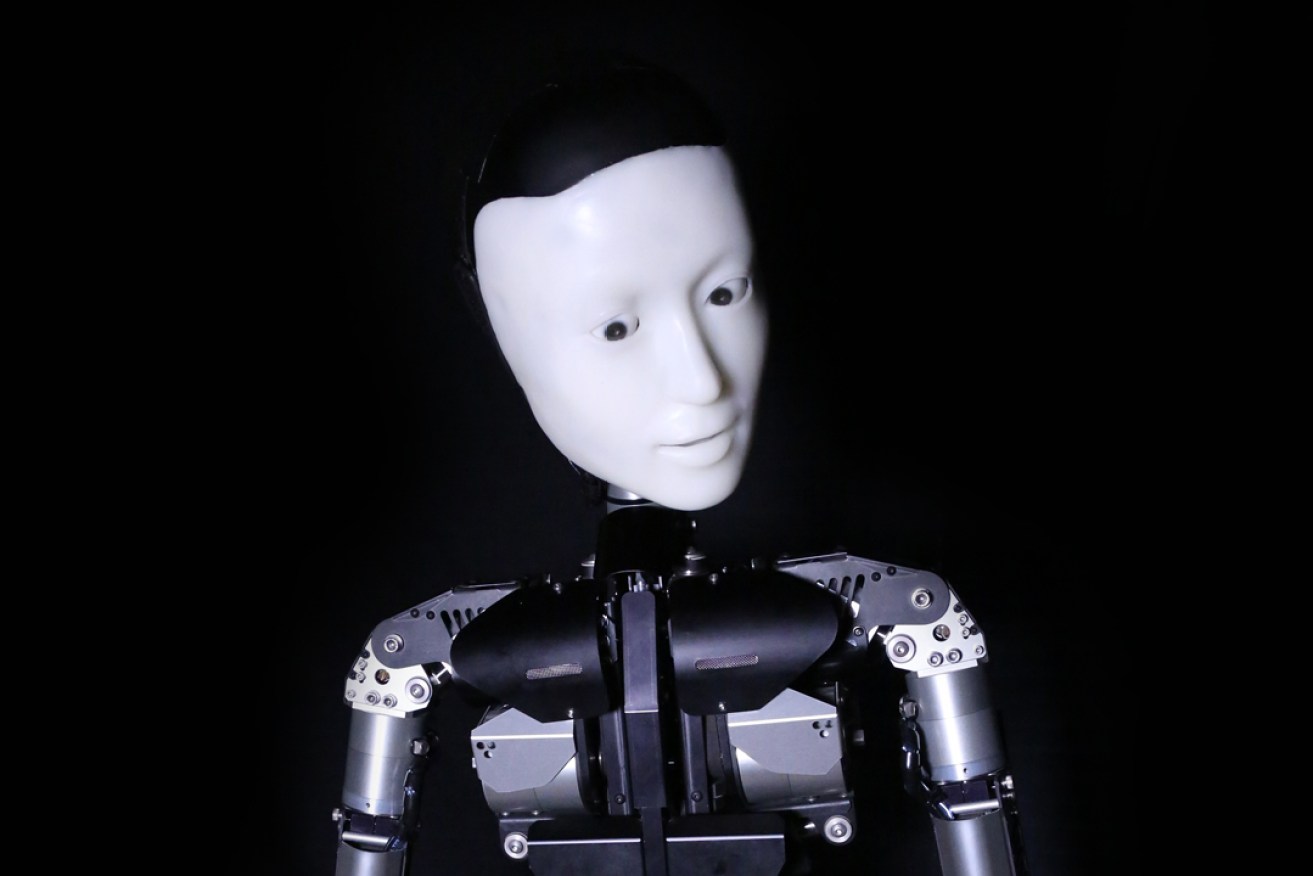OzAsia review: Scary Beauty
A humanoid figure stands on stage next to a grand piano. Behind it sit musicians positioned in front of a giant screen. At the opening notes of the music, the figure slowly lifts its head.


Skeleton is considered one of the world's most sophisticated robots.
“It” has a real presence — face lit by blinding spotlight, fingers twitching, hands raising and reaching out — and seems to show an awareness of what’s going on around it. As the android’s neural networks respond to the external stimulus, it blinks, sings and speaks, its movements jerky yet beguiling.
Scary Beauty is one of a collection of works within the OzAsia festival under the Meeting Points banner. Curated by Peter Knight, artistic director of the Australian Art Orchestra, these projects provide space for cultural intersection and the development of new ideas.
This collaboration with Japanese composer Keiichiro Shibuya brings together two unique artistic visions, incorporating the cutting edge of artificial intelligence (AI) and robotics technology with the experimental soundscapes of the orchestral ensemble.
Shibuya, a classically trained pianist and composer, strives to create new musical forms and is known internationally for his works across disciplines including design and technology. This world premiere of his three-part chamber opera features the first vocal performance by Skeleton, an android created by Professor Hiroshi Ishiguro in partnership with AI researcher Professor Takashi Ikegami and colleagues at Osaka University.
At just 35 minutes running time, the show is short yet perfectly formed.
It works on all levels. Shibuya’s three compositions each have a distinct musical flavour and are stunningly realised by the group of string, brass and percussion musicians.
The lyrics sung by Skeleton are excerpts of works by Michel Houellebecq (Possibility of an Island), Yukio Mishima (The Decay of the Angel), and William Burroughs and Brion Gysin (The Third Mind). The words are projected onto the rear screens as subtitles but, for two out of the three works, Skeleton’s voice is quite clear and understandable, if decidedly robotic.
What’s surprising is the extent to which this most “unreal” singer manages to command attention beyond the recital’s initial moments. The novelty doesn’t wear off. Even though there’s a stage full of extremely talented humans to watch, it’s difficult to look away from the red-velvet-robed robotic diva.
Scary Beauty is the latest in a series of intriguing works by Shibuya that explore the concept of contrasts and contradictory emotions — fear versus attraction, being drawn in to wonder at that which also repels us. In his 2012 composition, The End (also featuring as part of this year’s OzAsia Festival), Shibuya harnesses the vocaloid talents of animated hologram Hatsune Miku in “the world’s first virtual pop opera”. Vuitton-clad Miku examines her own existence as she sings of love, death and life as she knows it.
The real beauty of Scary Beauty is revealed in the questions it forces us to ask ourselves. Who is this delicate machine, this special beauty? Can it know what it feels like to be human?
This slightly unsettling but profoundly engaging work achieves the aims of its creator and deserves its place as one of OzAsia’s headline shows.
Scary Beauty was presented at the Space Theatre as part of the OzAsia Festival. Shibuya’s vocaloid opera The End will play at the Dunstan Playhouse on Tuesday and Wednesday. Read InDaily’s story about The End here, and see other OzAsia interviews and reviews here.




